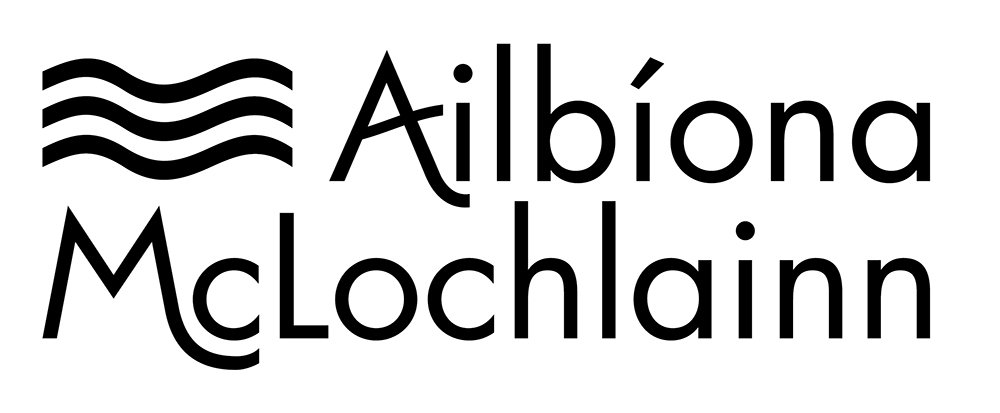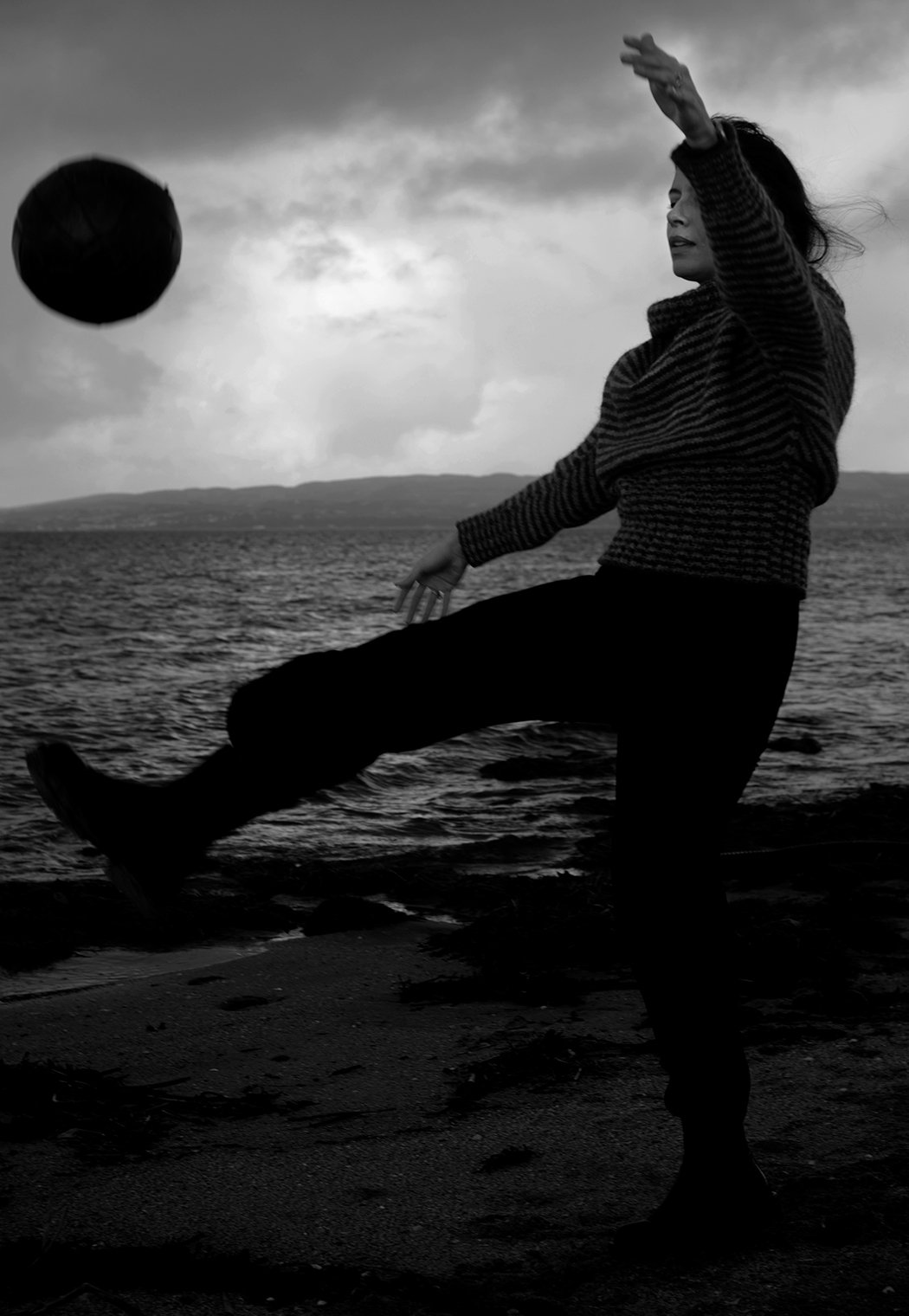Bad Light
Leica CL + Voigtlander Skopar 35mm f2.5
Just for kicks... I sent this image to a photographer friend and asked what he thought. His reply: ‘cool backlit photo &motion blur!’
I should also mention though, I had added a frowney face emoticon to my message. So actually his complete reply was ‘cool backlit photo &motion blur! why frowney face?’
Okay, so here is why. For one thing, this photo is not backlit. It is entirely reasonable to assume that it is. Mainly, because it looks backlit. And because that bright spot in the opening in the cloud cover, between the ball and the woman’s face, suggests that is where the sunlight is coming from. However, the sun was actually positioned behind my right shoulder. The woman’s figure is not backlit. And I have no idea why the sky is so bright in that particular spot. The atmospheric conditions here can be quite mysterious.
As for the motion-blur. Some of what comes across as that, probably is: namely the ball flying though the air, and the foot raised in mid-kick. However, this photo was taken at a shutter speed of 1/200. I photograph beside this inlet on a regular basis, and usually the gently swaying waves on a mildly breezy day are not this motion-blurry at this shutter speed. Granted, the waves are out of focus due to the shallow depth of field. But there is a difference between an out of focus look and a fuzzy/ jagged-edge look, and this is the latter. Rather than motion blur, the fuzziness of the waves seems to be some kind of chromatic aberration effect. You can see a similar sort of thing happening with the mountains in the background, with their grainy, low contrast fuzziness and poorly defined edges. I would even say that the ball, in addition to true motion blur, displays this aberration around the edges, as do the contours of the sweater against the sky.
To be clear, I think this is a terrible photo. But the interesting gesture, and the technical weirdness of it, made it the only one I did not delete from a failed attempt at a photoshoot, on a day cursed with what is known around these parts as ‘bad light.’
There are photographers who will tell you, there is no such thing as bad light, that it’s only a matter of using the correct settings for the light conditions at hand. I respect this opinion. However I assure you there are certain conditions here, in the northwest of Ireland, for which no imaginable combination of camera settings is suitable. Local photographers respect this, and simply avoid going out to take photos in ‘bad light.’ Of course if you are a wedding photographer, or have a pre-scheduled photoshoot for some other type of paid work that cannot be rescheduled, that is just bad luck. Of all the challenges I experience with my work-related photography, bad light has been the most difficult one to overcome.
So what exactly constitutes ‘bad light?’ The casual terms used to describe the conditions, would be things like ‘hazy,’ ‘milky,’ and ‘washed out.’ The biggest clue that these types of conditions are afoot, seems to be the colour of the sky - which will look pale and white-ish, rather than blue or grey, and often with a yellowish-purplish tinge to it. If there is cloud cover, the cloud will likewise look pale with a tinge of yellow, rather than a rich stormy grey. Another clue, is that the atmosphere will be lacking in clarity. Distant vistas will lack detail and almost seem grainy, compared to how they normally appear.
These conditions affect photos in a number of specific ways including the following -
. Things can look out of focus even if they are not.
. Things can appear backlit, or as if photographed at high noon, even if they are not.
. Contrast is low and images overall appear underexposed.
. At the same time, highlights are blown/ clipped and appear overexposed.
. Colours lack vibrancy and look muddy, often with a strange colour cast.
. Motion blur effects are exaggerated.
. If a lens/ camera is susceptible to ‘purple fringing’ or other chromatic aberrations, these come out in full force.
. If a lens/ camera is impressively resistant to ‘purple fringing’ or other chromatic aberrations, these can appear nevertheless.
It’s important to note that the ‘bad light’ can happen regardless of time of day, and in both overcast conditions and in sunlight. Even the so-called golden hour can be beset with bad light, resulting in photos with some or all of the above problems.
There is nothing that can be done to change the light conditions. However, over the years I discovered a trick that allows me to escape them. Or perhaps more accurately, to hide from them… quite literally, by seeking shelter under the cover of trees.
I stumbled upon this solution by accident. There is a bench in the corner of our garden that stands in front of a thicket of trees, whose canopies overhang it. At some point I began to notice that portraits taken on this bench always looked good, even when the light was ‘bad’ elsewhere in the garden {with the camera pointed in the same direction}. The only difference between the bench and elsewhere, was the tree cover - which still allowed light to illuminate the subject from a certain angle, while providing a dark backdrop and blocking off the sky from overhead, if that is the correct way of putting it. It was almost as if the tree cover filtered out the bad light.
I began to experiment with this. First by moving the subject around on what I had by then termed the ‘magic bench,’ and determining how much tree cover was needed, and where the light had to enter from. I then started trying to recreate the conditions elsewhere there was tree cover - for instance in the nearby forests and parks. Eventually, I accumulated an arsenal of woodsy locations, for days when the light was bad yet I had a pre-scheduled photoshoot.
The second photo in this post was taken only minutes after the first photo. My preferred choice of photoshoot location was by the water. I knew the light was bad, but I wanted to try it anyway just in case I was wrong. I was not. So after 15 minutes by the water’s edge under a vast expanse of milky yellow-tinged sky, we gave up and went to the forest. Same time of day, same light conditions, camera pointing in the same direction, the sun in the exact same position as before behind my right shoulder. But the subject is rendered completely differently. It is not the best-lit photo I’ve ever taken. But it became the cover photo for the sweater pattern, and I am pleased with it.


